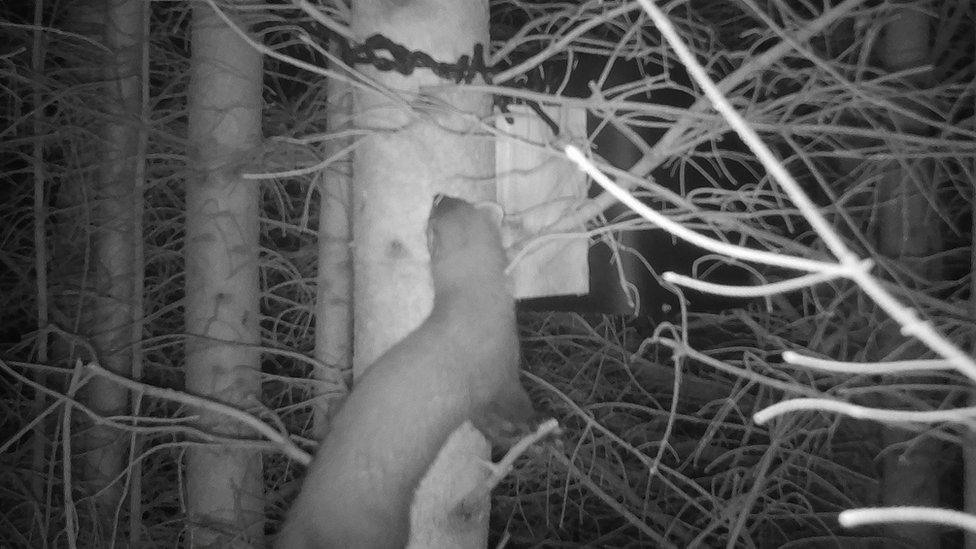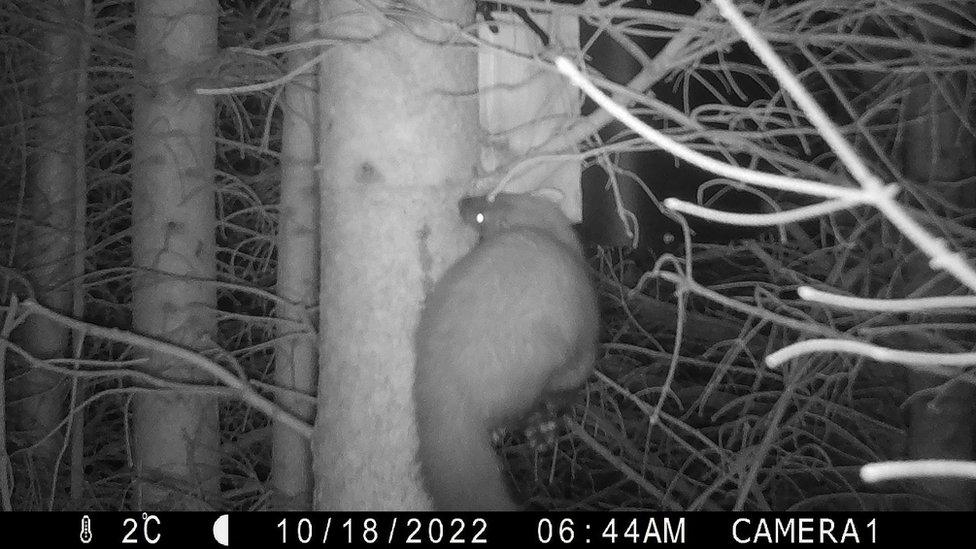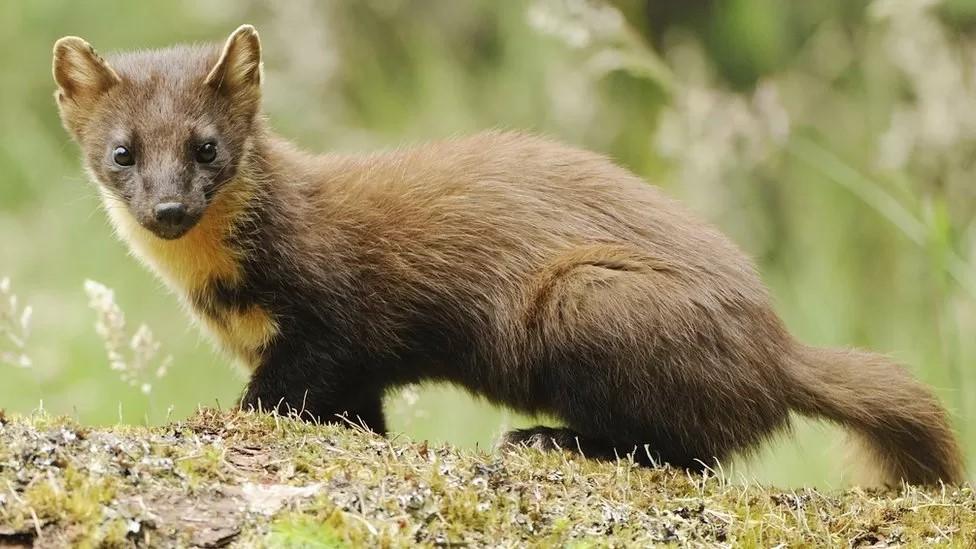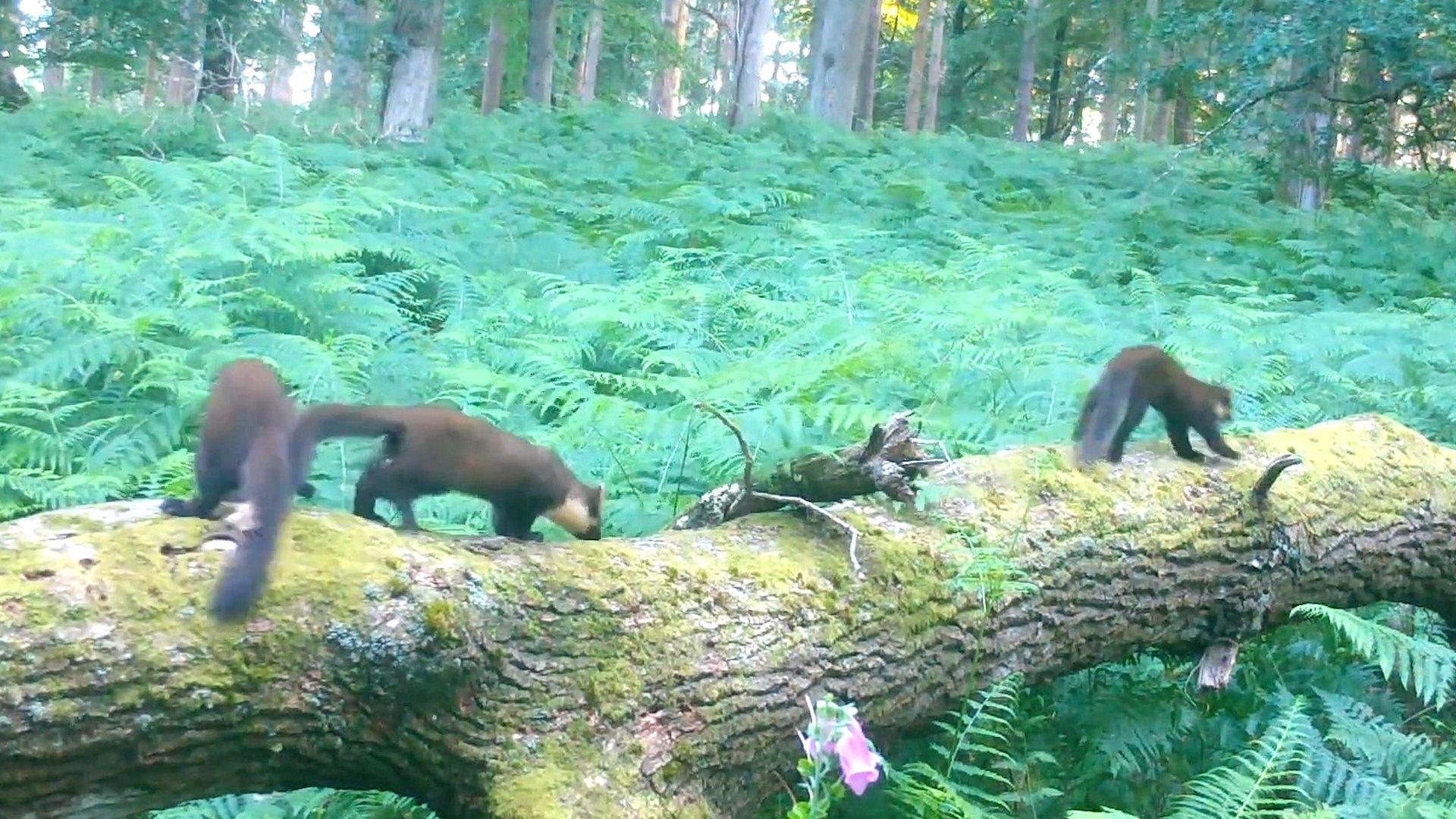Kielder Forest pine marten numbers rising, study suggests
- Published

One of the pine martens just 24 hours after the camera was installed in October
A study of pine martens, one of the UK's rarest mammals, suggests they could be strengthening their presence in England's biggest forest.
The elusive creatures were caught on camera in Kielder Forest, Northumberland, five years ago.
Sightings have increased since, and Forestry England began a project last February to boost their numbers.
Ecologist Wayne Penrose said: "It is early days and more data is needed, but the results are encouraging."
Pine martens were once thought to be extinct in England due to loss of habitat and being hunted for fur.
In 2018 they were spotted in the forest for the first time since it was planted in 1926.
Just months earlier one was captured on camera near Rothbury, the first confirmed sighting in more than a century in the county.

Ecologist Wayne Penrose puts up a pine marten box – one of 50 installed in Kielder Forest
The animals make dens high up in the trees and are usually nocturnal hunters.
The project at Kielder saw 50 denning boxes installed in one area of conifer forest a year ago.
Another area 15 miles (24km) away was also studied, this time with no boxes, so wildlife experts could assess the impact of providing the creatures with housing.

Pine martens can reach 2ft long and have a bushy tail
Hidden cameras soon captured images of pine martens checking out the denning boxes.
When experts examined the boxes in autumn, they collected droppings from both areas which DNA-tests confirmed were from pine martens.
'Got everyone buzzing'
"Four of the boxes showed clear evidence of martens using them for denning," Mr Penrose added.
"In fact, one inquisitive animal was photographed inspecting a den by a camera installed just 24 hours earlier.

Pine martens, like this one photographed in Scotland, were once thought to be extinct in England
"We also looked for marten scats [droppings] at set locations around the boxes and found nearly four times the number identified the previous year.
"Increased evidence of pine martens was also found in the area without boxes, in keeping with an upward trend, although not at the same level.
"To see such activity around boxes so soon has got everyone buzzing."
A member of the weasel family, pine martens can reach two feet long and have a bushy tail.
They eat small rodents, birds, beetles, carrion, eggs, fungi and berries, and mark their territories with scats deposited in places conspicuous to other martens.

Follow BBC North East & Cumbria on Twitter, external, Facebook, external and Instagram, external. Send your story ideas to northeastandcumbria@bbc.co.uk, external.
Related topics
- Published1 December 2022

- Published15 August 2018
